Humpback whales are hanging around the central coast this month in their summer feeding grounds around Monterey Bay. This week has been the best shoreline whale watching experiences since July 2014 when a similar oceanic event happened around these parts of the California central coast. I typically see ten or more whales every time I spend an hour gazing at the sea along the coast from Carmel to Point Lobos State Reserve over the past month.
Anchovies without pizza
Schools of northern anchovies are close to the shoreline in these waters and their presence has attracted unusually high levels of marine mammal and bird activity, including dozens of humpback whales cruising the rocky shoreline of Point Lobos State Preserve at Sea Lion Point.
Humpback whale south of Sea Lion Point, Point Lobos State Reserve. Hyatt Highlands Inn is located on the hillside upper left corner of photo.
I spent several hours two days this week around Sea Lion Point watching, hearing and photographing humpback whales. This is the best week I have ever experienced being close to the whales as several humpback whales were within a couple hundred meters of the shore. Everyone was amazed at the close proximity of wild immense whales. Hearing humpback whales from the quiet shoreline was an added sensory dimension missing from many whale watching experiences with loud motor powered boats chasing whales.
Pelicans and cormorants are also present in large numbers to participate in the feeding frenzy on seasonal anchovies and the sound of thousands of seabirds is another sensory aspect of whale watching from Sea Lion Point.
Humpback whales are the most commonly sighted whale species around Monterey Bay and central California coast. They come to these parts of California to feed in summer and head south to breed in warmer waters around Mexico and Costa Rica in winter. Recent estimates from a March 2015 report by NOAA Fisheries on the global humpback whale population estimates about 8,000 humpbacks are on the California-Mexico/Central America breeding migratory route. The California humpback whale population is estimated to be around 6,000 to 7,000 for Mexico wintering whales and a far smaller Central America population.
Many tourists see humpback whales when vacationing in Hawaii. The Hawaiian Islands winter migratory population is estimated around 10,000 whales and these whales primarily feed in Alaska in summer.
Humpbacks are one of the larger whale species at around 50 feet in length. When teaching children about humpback whales, the commonly used equivalent measure is to say a humpback whale is about the size of a school bus. The largest adults can exceed 60 feet in length.
The humpback dorsal fin and the larger portion of body to the blow holes and head, perhaps 25 to 35 feet of this humpback whale is seen in image above.
Sea lion feeding frenzy off Sea Lion Point, Point Lobos State Preserve. The humpback whales tend to be seen near the pods of feeding sea lions.
Northern anchovy are a small, oily fish about six inches in length and smaller. Last year scientists reported massive schools of northern anchovy sighted off the coast of San Diego in numbers not seen for thirty years and they were heading north. Summer 2014 whale sightings in Monterey Bay were widely reported around the world as people regularly saw pods of humpback whales close to shore over several days that turned into weeks of sightings. Locals like me saw more whales than ever sighted during our lives around the bay in summer 2014.
Humpback whale with its mouth open. The larger lower jaw is just below water surface and upper jaw is out of water feeding effortlessly.
Summer 2015 is arguably even more humpback whale coastal activity than last summer. Tourists and locals visiting Sea Lion Point at Point Lobos State Reserve have seen several whales feeding during most hours of the day in the shallow waters around the coastal kelp forest. Normally, whale spotting from the coast is simply whale spouts and perhaps a body, dorsal fin and tail fluke slightly visible around a half-mile off the coast.
What is uncommon for coastal whale watching is humpback whale activity happening next to the shoreline.
Two humpback whales pass outside the rocks at Sea Lion Point in Point Lobos State Reserve. Whale blow is seen from the leading whale and the trailing humpback is seen descending as the distant protrusion in center of photo.
Most whale sightings from the coast of Point Lobos are seen along a migratory path outside these rocks. There are a couple hundred sea lions covering these rocks at Sea Lion Point on Point Lobos State Reserve.
The humpback tail fluke is about 12 to 15 feet across for an adult humpback whale.
Humpback whale tail rain shower.
See Monterey Bay Whales, Sea Lions and Sea Otters in HD this week
Big Blue Live PBS/BBC television 3-night event is programmed this week from Monday August 31 to Wednesday September 2. The show will feature the recovery of Monterey Bay from overfishing in the first half of the 20th century to the vibrant marine sanctuary today holding abundant marine life along the central coast of California. Their video imagery from the area this month is going to be an amazing sight.
Point Lobos Foundation has a blog on its website with a great description of the recent whale watching activity at the park.
Longest, greatest whale show we have ever seen (Aug 24, 2015).


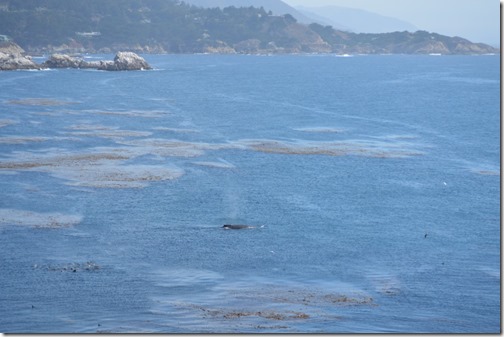
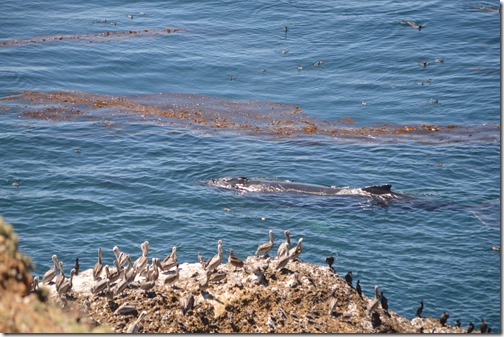
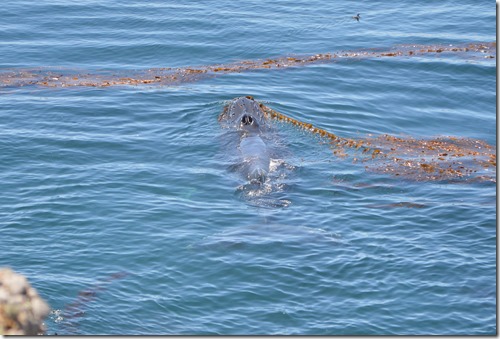
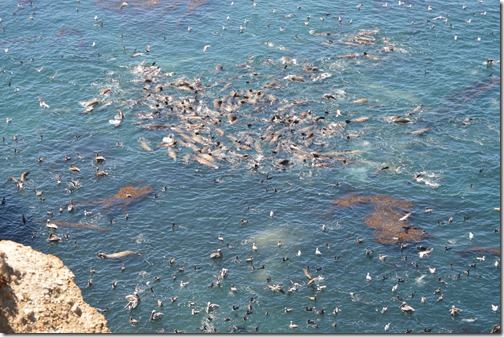
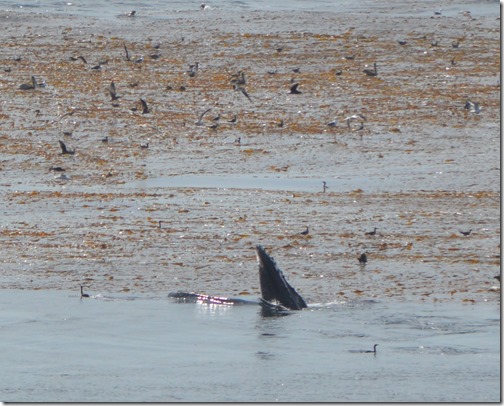

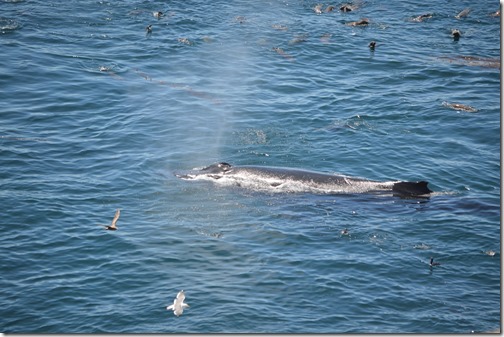
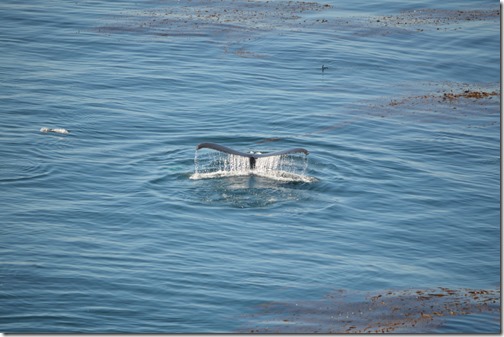
5 Comments
Comments are closed.